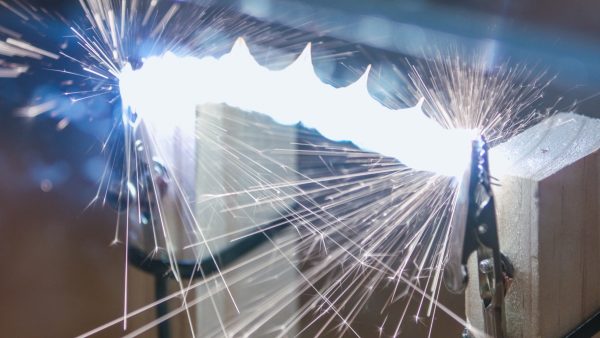Electricity Definition
Electricity is the flow of electrical energy from one place to another. For example, electricity flows in a closed circuit to power electronics.
View Lesson on Electricity & Circuits
Become a member to get full access to our entire library of learning videos, reading material, quiz games, simple DIY activities & more.
Become a member to get full access to our entire library of learning videos, quiz games, & more.
Plans & Pricingto watch this full video.

Access All Videos
and Lessons, No Limits.
Access All Videos

No credit card required,
takes 7 sec to signup.
No card required

Ready-to-go lessons
that save you time.
Ready-to-go lessons
If you are on a school computer or network, ask your tech person to whitelist these URLs:
*.wistia.com, fast.wistia.com, fast.wistia.net, embedwistia-a.akamaihd.net
Sometimes a simple refresh solves this issue. If you need further help, contact us.
Electricity & Circuits
Fun Facts
- Electricity can flow through your body or a pickle!
- Power grids deliver electricity to our homes.
- Static electricity and current electricity both exist.
Why Do We Need To Know About Electricity
Learning about electricity helps us understand how many technologies around us work, including things like phones, electric cars, and even space shuttles. Electrical engineers use their skills to create these technologies, making our lives better and easier. They work on cool projects, like making better artificial limbs for people or creating smart skin that can feel.
As electricity and engineering get better, we see big improvements in many areas, including medicine. Knowing how electricity works not only gives you a chance at great jobs but also lets you see how it powers so much of what we use every day, from light switches to computers.
Frequently Asked Questions
Check out the Full Lesson on Electricity & Circuits
In this lesson, we learn that:
- Electricity is the flow of electrical energy from one place to another.
- Electricity flows through conductors, but it cannot flow through insulators.
- A closed circuit is needed for electricity to flow and power our electronics.
Related Topics
- Absorbency Definition
- Atom Definition
- Batteries Definition
- Biosphere Definition
- Biotechnology Definition
- Body Fossils Definition
- Cellular Respiration Definition
- Chemical Change Definition
- Circuit Definition
- Comparative Anatomy Definition
- Computer Programming Definition
- Condensation Definition
- Conductor Definition
- Conservation Definition
- Corona Definition
- Definition Of Engineering
- Definition Of Non-living Things
- Distillation Definition
- Electric Charge Definition
- Electricity Definition
- Engineer Definition
- Engineering Design Process Definition
- Exoskeleton Definition
- Geosphere Definition
- Gravity Definition
- Greenhouse Gases Definition
- Hydrosphere Definition
- Insulator Definition
- Landform Definition
- Latitude Definition
- Motion Definition
- Muscular System Definition
- Mutation Definition
- Partial Eclipse Definition
- Precipitation Definition
- Predator Definition
- Seeing Definition
- Signal Definition
- Smelling Definition
- Solution Definition
- Tectonic Plates Definition
- Transform Boundary Definition
- Volts Definition
- Water Distribution Definition
- Wave Reflection Definition
- Wavelength Definition
- Wedge Definition
- Weight Definition
Start a Free Trial Today. Get a $5 Amazon Gift Card!
Teachers! Start a free trial & we'll send your gift card within 1 day. Only cards left. Try it now.
Select Grade
Select Subject
This email is associated with a Science Kit subscription. Kit subscriptions are managed on this separate page: Manage Subscription

-
Download InvoiceScience & Math$/yr
-
Download InvoiceScience Only$/yr

access all lessons
• No credit card required •
"My students loved the videos. I started the video subscription in May and used them as a review before the state test, which I know contributed to 100% of my class passing the state test."
Rhonda Fox 4th Grade Teacher, Ocala, Florida
Use Generation Genius in Your School
Access all lessons free for 30 days.
"My students loved the videos. I started the video subscription in May and used them as a review before the state test, which I know contributed to 100% of my class passing the state test."
Rhonda Fox 4th Grade Teacher, Ocala, Florida
• No credit card required •
Already a member? Sign In
* no credit card required *

* no credit card required *
* no credit card required *


to Discover the Benefits of Generation Genius
Learn How to Save for Your School & District!

no credit card required
Skip, I will use a 3 day free trial
Enjoy your free 30 days trial
-
Unlimited access to our full library
of videos & lessons for grades K-5. -
You won’t be billed unless you keep your
account open past your 14-day free trial. -
You can cancel anytime in 1 click on the
manage account page or by emailing us.
-
Unlimited access to our full library of videos & lessons for grades K-5.
-
You won't be billed unless you keep your account open past 14 days.
-
You can cancel anytime in 1-click on the manage account page.
Cancel anytime in 1-click on the manage account page before the trial ends and you won't be charged.
Otherwise you will pay just $10 CAD/month for the service as long as your account is open.
Cancel anytime on the manage account page in 1-click and you won't be charged.
Otherwise you will pay $10 CAD/month for the service as long as your account is open.
We just sent you a confirmation email. Enjoy!
DoneWe use cookies to make your experience with this site better. By using this site you agree to our use of cookies. Click "Decline" to delete and block any non-essential cookies for this site on this specific property, device, and browser. Please read our privacy policy for more information on the cookies we use.Learn More
We use cookies to improve your experience. By using this site, you agree to our use of cookies. Click "Decline" to block non-essential cookies. See our privacy policy for details.Learn More




























































































































